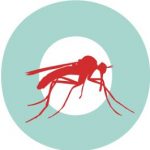 Open science is a topic that I’ve touched on regularly in the past few years, and it’s incredibly pleasing to see a number of projects emerging to make published papers freely available, but also to make the data behind research accessible to all.
Open science is a topic that I’ve touched on regularly in the past few years, and it’s incredibly pleasing to see a number of projects emerging to make published papers freely available, but also to make the data behind research accessible to all.
A sign of the possibilities with open science comes via a recent project to try and tame Malaria. The disease, which remains one of the most deadly in the world, is believed to kill over 400,000 people a year, many of whom are children.
Opening science
A global consortium of academics set out to use an open science approach to tackling the disease.
In the crosshairs of the group was the artemisinin antimalarial treatment that was first developed in the 1970s. Whilst the compound has proved to be effective, there are signs that resistance to it is emerging in certain parts of the world. Should that resistance spread then it’s game over for the treatment.
The researchers say that Malaria is a somewhat neglected disease that seems to lack the attention of the pharmaceutical industry, hence the need for a new approach.
As such, the team borrowed the open source method from the software world, with some 51 researchers from across 21 different organizations and eight countries joining forces to tackle the issue.
They started on a number of possible drug molecules made available by GSK. These were opened up to researchers from around the world to share data and insights via the Open Source Malaria Consortium.
This resulted in a wide range of contributions, from new antimalarial compounds to new assays.
Suffice to say, this is very much the beginning of the story rather than the end, but already several rounds of research have been conducted, with all of the data from these experiments made available to the public as it’s generated.
The hope is that more and more researchers will be attracted, and will contribute their expertise, to the project and the promising early results will be significantly built upon over the coming years.